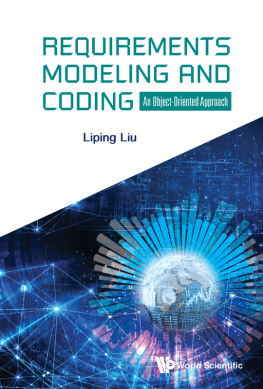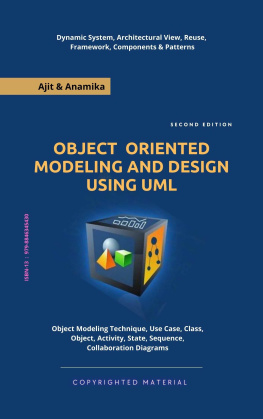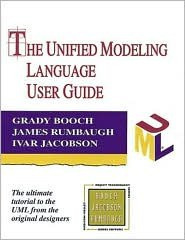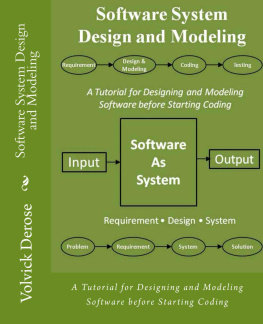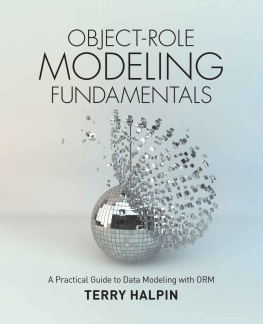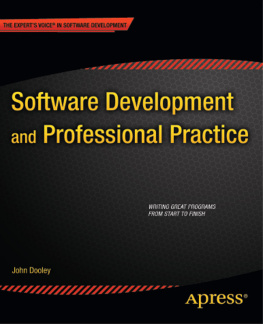Contents

Chapter 1
Introduction
The process of systems analysis is to chart a course to achieve a vision. This text teaches how to analyze and model business requirements that can then eventually be transformed into systems specifications for developing a computer-based information system that supports the vision. In the process, we will learn how to develop evolving artifacts that represent business requirements at one end and systems specifications at the other. The target readers of the book are students and professionals who intend to become or understand business analysts, whose primary role is to bridge the gap between programmers and business end-users.
In studying this text, the reader shall pay close attention to the following three streams of the course development: System, Process, and Techniques. This chapter introduces three streams. First, we will introduce the concept and the components of information systems and the typical roles assumed by a system analyst. Then, we will introduce the systems development life cycle and explain the deliverables of each phase as well as the techniques to be used to produce said deliverables.
Information Systems
A system is a set of interrelated and interacting elements that collaborate to accomplish a specific purpose. This is a generic concept because it applies to many other subjects of study such as biology, economics, and politics. A system has the following features: (1) each element has its own purpose, which serves the purpose of the entire system; (2) different elements are interdependent; (3) the purpose and function of the individual elements serve the purpose and functions of the entire system; and (4) the whole is greater than the sum of individual elements.
An information system is a set of computer hardware, software, database, and people that are integrated to provide a platform for transactional and decisional support. A typical information system includes elements as exampled in .
Computer hardware includes input and output devices, communication devices, central processing units (CPU), and data storage. The CPU acts as the brain of a computer and is essentially an electronic circuitry made of microswitches that use on/off states for 0s and 1s to perform basic arithmetic, logic, controlling, and input/output operations. Inputs and outputs include monitors or terminals, keyboards, pointing devices, printers, speakers and sound cards, video cards, scanners, etc. There are two broad categories of storage: random access memory (RAM) and permanent memory. The difference is that RAM is much faster than permanent memory (at least 107 faster), so almost all programs will store their temporary data in blocks of RAM called variables for fast access. Yet, RAM is temporary, and it will not survive a power shutdown. Permanent memory will stay for a long period of time despite power failures. Examples of this form include hard drive, floppy drive, CD, and DVD, etc. A hard drive stores 0s and 1s by magnetizing drive materials to different directions. A CD records 0s and 1s by creating small dots (pits) so that pits and lands reflect light differently.
Table 1.Information system constituents.
Hardware | Input (e.g., keyboard, mouse, touchscreen, microphone) Output (e.g., display, speakers) Central processing units Storage (random access memory and permanent memory like hard drive, CD, DVD, jump drive, etc.) Communication devices (modem, network interface card, cable, hub, switch, router) |
Software | Operating systems (e.g., Windows, Mac OS, Android, iOS) Databases Business applications (e.g., forms and reports) |
People | End users Programmers, developers, software engineers Business analysts, systems analysts Network engineers Database administrators, systems administrators |
Communication devices include modems, repeaters, bridges, routers, network interface cards, and cables. Modem is a portmanteau made of two words, modulation and demodulation, and these actions are responsible for the conversion between analog data and digital data (0s and 1s). Cables are responsible for sending raw electric or light signals representing 0s and 1s. Typical examples include patch cord made of unshielded twisted pairs of copper wires and fiber optical ones made of a shielded glass thread. Network interface cards are responsible for packing individual 0s and 1s into data packets called frames and controlling the error of transmission. Switches are used to create segments inside a network to improve its performance and security. Routers are responsible for connecting individual networks to form inter-networks, or internet.
People are an important part of the information system. The people involved include end users, programmers, and those who play the role of bridging these two groups or supporting them. The first set is systems analysts (or business analysts, business engineers, or systems engineers), who acts as the middleman between users and programmers; they facilitate communications between the two groups so that the users wants can be translated into program specifications, according to which the program can then be developed. The second set includes the database administrators, system administrators, and network administrators, who support both end users and programmers in sharing data, system, and network resources. The third set is made up of support technicians who help troubleshoot hardware and software issues for other users.
This book will not teach how to manage people; the reader can take a course in management or psychology to learn how to design and develop effective organizations. This book will not teach how to analyze, model, develop, and manage hardware components; the reader should take courses in computer engineering or technology management to learn those aspects of an information system. This book will also not teach how to analyze and develop operating systems, which is usually taught in computer science. As far as this book is concerned, an information system contains business applications (or programs) that serve business end users for transactional or decisional support, with databases in the back end as the central repository of data resources for applications ().
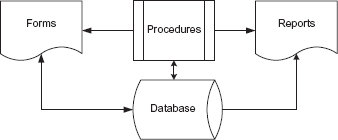
Figure 1.The essential components of an information system.
Business applications
Forms and reports are the typical business applications. They are the interfaces between the system and the user, and so are often referred to as user interfaces. The difference between them is that a form is usually used for viewing and entering data whereas a report is used to display and summarize data.
Forms and reports often interact with the database through intermediate program modules called procedures, which run behind the scene. In other words, procedures are the connectors of the front-end forms/reports with the back-end databases. They collect data from forms and/or retrieve data from databases, process them, and finally write the result back to the database or display the result to the user. Procedures can be located with front-end applications (such as in client/server systems), stored on back-end databases (so-called stored procedures), or stored somewhere in between such as applications servers. Procedures usually implement business rules that are subject to change during daily business practice. Forms, reports, and procedures constitute business applications.

